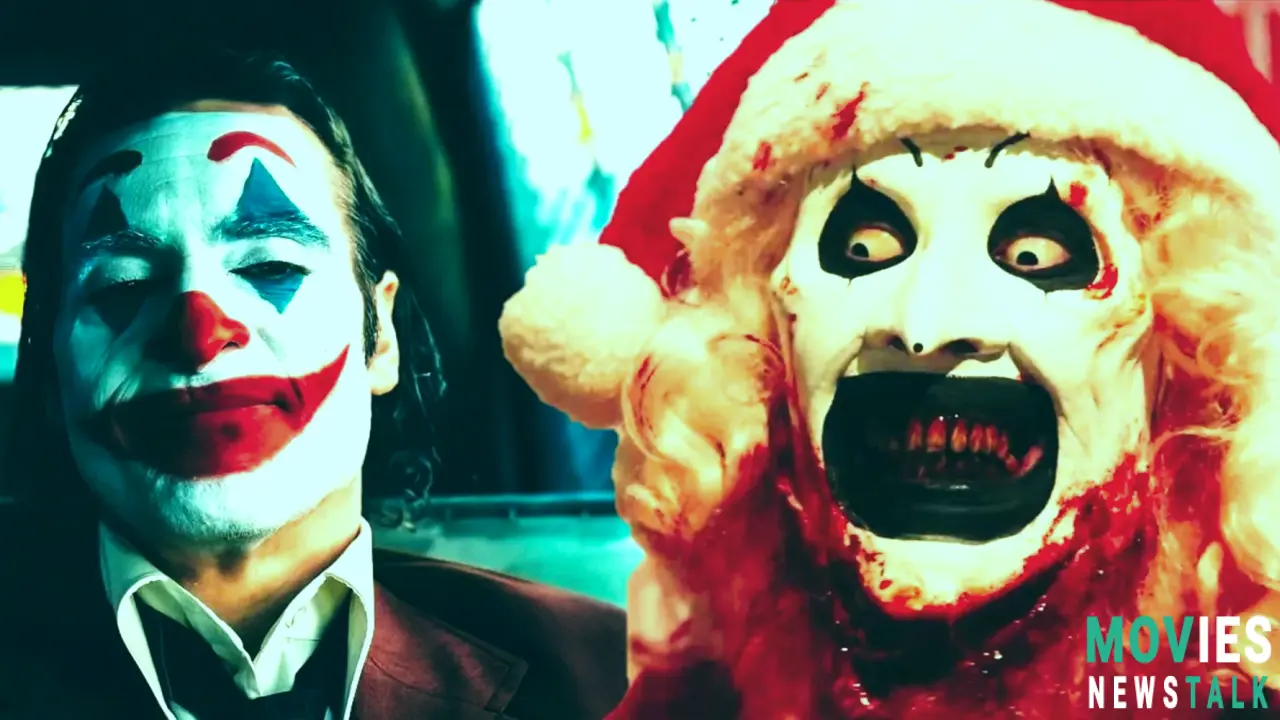Art the Clown Beats the Joker! Terrifier 3's Box Office Domination Explained
The Unexpected King of the Clowns: Terrifier 3 Topples Joker 2!
Get this: Terrifier 3 is now officially Hollywood's top clown at the box office – it's even beaten Joker: Folie à Deux! That's seriously unexpected. Since premiering atFantastic FestonSeptember 19th,and with a wider U.S. theatrical release onOctober 11th, this gory slasher threequel became a huge hit, breaking records in its opening weekend alone. And things only get better; Terrifier 3 grabbed the top spot, out-grossingJoker 2in its second weekend andThe Wild Robotin its third. It just sounds ridiculous, doesn't it?!
These are both hugely anticipated clown-centric movies; both sequels focusing on highly memorable villains; yet those outcomes couldn't be more different! Terrifier 3 completely smashed box office expectations while Joker 2 severely underperformed. This insane contrast deserves deep examination – and begs a very crucial question that is what exactly transpired and exactly what allowed that low-budget slasher threequel to achieve these results?
Terrifier 3's Shocking Box Office Numbers: A Gory Victory
Let’s look at some numbers. Terrifier 3 grossed more than 2.5 times than whatJoker: Folie à Deuxmanaged during its second weekend! We’re talking$18.3 millionversus roughly$7 millionforJoker 2.That is insane. And even ifJoker 2had a head start it didn’t last, really demonstrating that quality storytelling with great marketing really does generate those kinds of results; despite the relatively small budget compared toJoker 2. Joker 2'sopening weekend also only managed around$37.7 million – that's far below what many were anticipating from what should've been a far, far greater performance, ultimately underperforming by way more than 100 million compared to its highly successful predecessor.
The overall reception toward each film further demonstrates those major differences involved:Terrifier’s success came about slowly through word-of-mouth alone; gaining those devoted fans and achieving that almost cult-like fame. It continues that tradition, making a phenomenal result by attracting its existing audience.
On the other sideJokeris already known; highly anticipated yet critically disliked— and ultimately its existing fans felt the creative decisions made by its creators in this specific storyline really betrayed that fanbase; severely harming its prospects – making word-of-mouth a largely negative force which severely limited its popularity, compared to that initial highly-positive impact.
Terrifier 3's Winning Formula: Horror, Hype, and Perfect Timing
One of the reasons whyTerrifier 3totally crushed it is, the amazing and generally positive reception. It got “fresh” ratings (those super important critic and audience reviews!), even if those weren’t as amazing as the priorTerrifiermovie; critics scores remain extremely respectable at76%. It got an even better audience score at89%, folks! A solidBCinemaScore means audiences absolutely loved it, despite the vomiting and walkouts. Free publicity! This just proves that controversial content has serious possibilities.
The continued, hype-fueledTerrifierfranchise gained additional popularity; creating major excitement surrounding those attempts to push boundaries for horror, making that release feel less of an option and much more of a necessary and ultimately desirable experience.
And theOctoberrelease was brilliant: That was right in the spooky Halloween season; getting maximum possible audiences who desired some thrilling scary movie, compared to the limited available alternatives around that same time; showcasing once again why the production and creative planning involved here made this movie's popularity so immense, so impactful for those considering marketing!
Joker 2's Box Office Crash: What Went Wrong?
Now let’s look atJoker 2— its box office tanking has just as much to do with its bad reception. Its "rotten" critic and audience scores (both near32%) seriously hurt. That killed any potential audience outside its devoted fans who were actively dissuading others from even considering it. Fans felt betrayed and many thought that those key ideas around that morally-ambiguous superhero weren't effectively captured. Its failure really brings everything home.
That critically bad response from audiences shows just why critical appeal to specific demographics matters more than what a production company originally thought might sell: it really, truly matters how audiences respond and it needs to also incorporate that fan feedback into the actual development itself! It couldn't happen otherwise.
The Aftermath: A Franchise Rises, and Another Falters
Terrifier 3'ssuccess? It confirmsTerrifier 4is already confirmed! It could launchTerrifierinto long-term slasher-movie legend status. And that low-budget success matters; showcasing the possibility for similar productions with minimal investments and maximized quality that completely exceeded what would be otherwise achievable by more massively funded productions.
Joker 2'sflop? This one feels really bad. It was probably a costly misfire fromWarner Bros. It'll almost certainly end thisJokerfranchise despite the ending’s hints towards a third movie and further additions! This impacts DC; its latest run has serious issues and those kinds of issues aren’t going to simply disappear because of how it negatively affects everyone within those larger universes. This certainly was completely unforeseen, leaving a huge and incredibly lasting question that has far-reaching consequences that can't simply disappear and remain relevant within various production strategies, both creative and otherwise.
Conclusion: The Power of (Well-Executed) Horror and the Risks of Alienating Your Fans
Terrifier 3’s triumph shows a low-budget slasher's potential if well-made and supported through a focused campaign; maximizing what existing audiences would eagerly enjoy. Joker 2'sfailure? A lesson: Listen to your fans – betraying their expectations doesn’t simply cause a poor box office run. That can damage those long-standing relations, impacting a larger and ever-increasing universe, those existing fans and its creative possibilities for the future, even after a successful debut. There needs to be a change and only better creative choices could address such key problems which continue to persist throughout the industry itself, resulting in those serious financial consequences that cannot ever simply be ignored.

